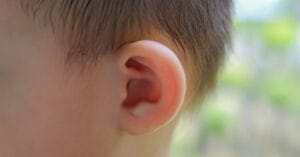Many parents notice their toddlers plugging their ears with their fingers and wonder why they do this. While it might seem alarming, this behavior is common among young children. There are several reasons why toddlers engage in this habit, ranging from sensory processing to simple curiosity. In this article, we will explore the potential causes behind toddlers plugging their ears and practical solutions to manage the behavior.
Why Do Toddlers Plug Their Ears?
Sensory Sensitivity
One of the most common reasons for toddlers to plug their ears is sensory sensitivity. Toddlers are still developing their sensory processing systems, which means they can be easily overwhelmed by loud or unfamiliar sounds.
- Loud environments like malls or crowded places can feel too intense for them.
- Sudden noises such as vacuum cleaners, sirens, or dogs barking may startle them.
In these situations, plugging their ears is a natural reaction to protect themselves from sensory overload.
Curiosity and Self-Discovery
Toddlers are in a constant state of exploration and learning. Sometimes, plugging their ears is simply a way for them to experiment with their sense of hearing.
- By blocking out external sounds, toddlers may notice changes in how they perceive their environment.
- This act of curiosity is a normal part of childhood development as they begin to understand cause and effect.
Communication Challenges
Sometimes toddlers may plug their ears when they are feeling overwhelmed or frustrated, especially if they cannot express their emotions verbally. This could be linked to:
- Communication difficulties, where the child cannot explain what they are experiencing or how they are feeling.
- A way to block out overwhelming stimuli when they are upset or trying to regain control.
Mimicking Behavior
Toddlers often mimic what they see adults or older children do. If they’ve observed someone else plugging their ears, they might copy the action without fully understanding its purpose.
- This could be a learned behavior from siblings, peers, or media.
Potential Hearing Issues
In rare cases, a toddler plugging their ears could indicate an underlying hearing issue or discomfort, such as:
- Ear infections, which can cause pain or pressure, leading the toddler to touch or cover their ears frequently.
- Hearing loss or sensitivity, where certain frequencies may cause discomfort.
It’s essential to keep an eye on recurring ear-related behavior and consult a pediatrician if it becomes persistent.
When to Be Concerned
While ear plugging is generally a harmless and temporary behavior, parents should be aware of certain signs that may require further evaluation:
- Constant or frequent ear plugging even in quiet or normal environments.
- Signs of discomfort, such as tugging at the ears, crying, or irritability.
- Speech delays or lack of response to sound.
- History of ear infections or fluid buildup in the ears.
If any of these symptoms are present, it’s advisable to seek medical advice to rule out any hearing issues or infections.
How to Help Your Toddler
Minimize Sensory Overload
If your toddler seems to be plugging their ears in response to loud noises or overstimulating environments, try the following:
- Create a quiet space: When out in public or during loud activities, provide a quieter area where your toddler can retreat and feel more comfortable.
- Use noise-reducing headphones: Consider investing in noise-canceling headphones specifically designed for toddlers to help reduce the intensity of sounds without completely blocking them out.
- Prepare them for noisy situations: Before entering a loud environment, explain what to expect and reassure them. For example, say, “We’re going to a busy park. It might be loud, but we can take breaks if you need them.”
Encourage Communication
If your child is plugging their ears due to frustration or inability to communicate, help them express their needs through words or gestures:
- Teach simple words like “loud” or “quiet” to help them express discomfort.
- Use visual aids or sign language if verbal communication is a challenge.
Promote Positive Sensory Experiences
Introducing your toddler to various sounds in a controlled manner can help them become more comfortable over time:
- Play soft music at home or during playtime.
- Engage in sensory-friendly activities such as playing with quiet toys or spending time outdoors where sounds are more natural.
Be Patient and Observant
Understand that toddlers are learning how to manage their sensory experiences, and this behavior is often a temporary phase. However, if you notice that the behavior is persistent or linked to other developmental concerns, it’s important to consult with a healthcare professional.
Conclusion
Seeing your toddler plug their ears with fingers can be concerning at first, but it’s usually a normal part of their development. Sensory sensitivity, curiosity, communication frustrations, and mimicking behavior are all common reasons for this action. By understanding the potential causes and offering support, parents can help their child navigate this phase. However, if the behavior persists or is accompanied by other symptoms, seeking medical advice is a good precaution to ensure there are no underlying issues.
